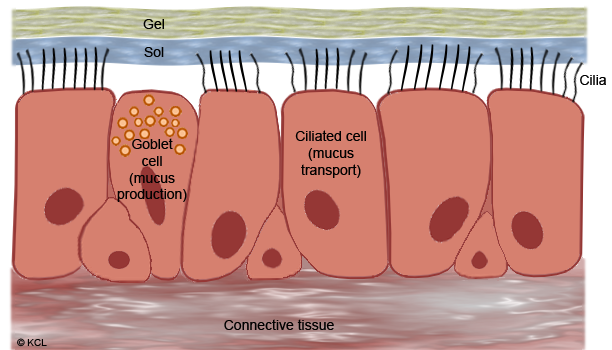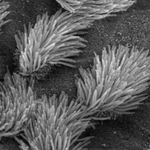Mucociliary clearance in health and disease
Essentials of a functioning mucociliary transport system

There are three components that are required in order for the mucociliary escalator to work effectively:
- Ciliated epithelial cells: Cilia are microscopic, hair like processes that extend from the epithelial cells lining the airways of the lungs. Cilia are present in the airways from the trachea down as far as the respiratory bronchioles. The cilia work together and beat in synchrony, sweeping dust and germs trapped in mucus secreted by "goblet cells" in the epithelium towards the mouth.
- Aqueous sol layer: The aqueous sol layer (or peri-ciliary fluid) is a layer of fluid that surrounds and bathes the cilia, enabling them to beat effectively.
- Mucous (gel) layer: The gel (or mucous) layer sits on top of the aqueous sol layer and is formed of a sticky mucous secreted by the goblet cells in the epithelium. The purpose of the gel layer is to trap any particles or pathogens that have managed to bypass the defense mechanisms of the upper airway, protecting the distal airways from infection and inflammation. Once these foreign particles are trapped in the mucous layer, they are moved towards the mouth and throat by the co-ordinated action of the cilia where they are either swallowed or coughed and cleared.

Cilia viewed under a microscope
The mucociliary escalator needs to work as a synchronised, co-ordinated unit if effective secretion clearance is to be achieved.
The cilia have a 'power stroke' which propels the secretions mouth wards, and a 'recovery stroke' which returns the cilia to their resting position, enabling them to recover and attach to the next lot of mucous, again propelling it mouth wards with the next power stroke.